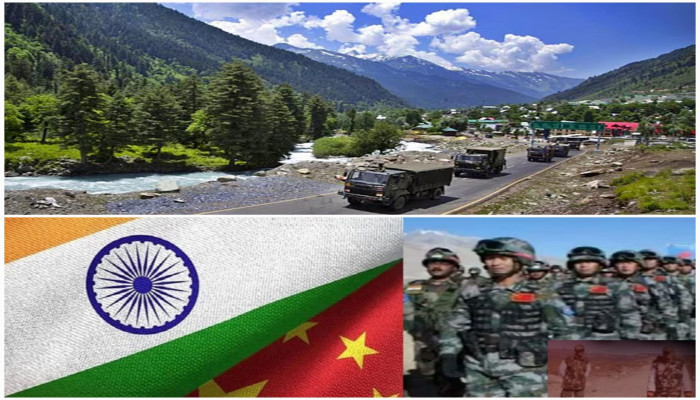India opens Demchok to civilian visitors' weeks after disengagement with China
- In Reports
- 05:05 PM, Feb 06, 2025
- Myind Staff
Demchok, a key location in the recent border tensions with China, has now been opened to civilian visitors as part of India's new Battlefield Tourism initiative. This program, a collaboration between the Ministry of Defence, state governments, and the Ministry of Tourism, includes 77 forward sites, with 21 in Arunachal Pradesh, 14 in Ladakh, 11 in Jammu and Kashmir, and seven in Sikkim.
After a four-year standoff, India recently declared the completion of disengagement at the disputed points in Demchok and Depsang Plains along the Line of Actual Control in Eastern Ladakh. Indian troops have resumed patrols in Demchok, an area where Chinese forces had been stationed at Charding Nullah.
This disengagement was part of the agreement reached between India and China on October 21, just before Prime Minister Narendra Modi and President Xi Jinping met during the BRICS Summit in Russia to mend bilateral relations.
The sites in Arunachal Pradesh include Tawang, Bum La, Gorsam, Lohit, Kameng Region, and Walong, while in Ladakh, in addition to Demchok, sites like Galwan and Pangong Tso are also included. Galwan, in particular, was the location of violent clashes between Indian and Chinese troops in 2020, and Pangong Tso has been a hotspot for military standoffs since 1962.
In high-risk border areas, visitors must coordinate with Indian Army units for safety and obtain necessary clearances. While certain core operational zones will remain off-limits, the goal is to open as many forward locations as possible, allowing citizens to experience the challenging terrain and weather where significant battles occur.
Gajendra Shekhawat, Union Tourism Minister, stated, “The Indian Army, in collaboration with the state governments and Ministry of Tourism, has put in place risk mitigation and safety measures to ensure the well-being of visitors to these sensitive and remote locations.”
Shekhawat further said in a written reply in Lok Sabha on Monday, “In high-risk border zones, visitors are required to coordinate with Army units for safety and clearances, facilitated via a single window, while in high-altitude areas, precautions have to be adopted and acclimatisation protocols are also being advised.”
However, access to some high-altitude locations will be controlled, and particular access may be issued for security protocols.
According to officials, the Army has put emergency evacuation protocols in place to provide immediate medical assistance, with weather advisories issued to prevent accidents in extreme conditions.
In addition, the Army is working on transforming several historic and active battlefields and border areas into accessible tourist destinations. This initiative allows Indian citizens to visit sites where soldiers have shown remarkable bravery, helping foster a greater appreciation for the defence forces.
These locations, which were previously restricted due to their strategic importance and rugged terrain, will now provide visitors with a firsthand understanding of the experiences of soldiers stationed in these remote areas. The effort aims to promote connectivity, tourism, and socio-economic development in border regions, with the Army collaborating with local civil authorities to ensure the success of these projects while maintaining high operational readiness.







Comments